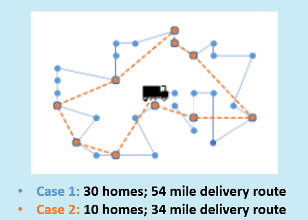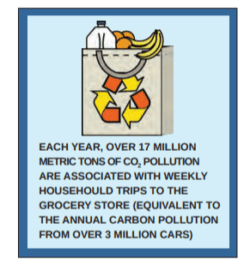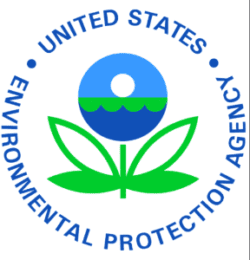Driving to the grocery store each week can be a hassle.
For those who have health or mobility issues that make it difficult to shop, and for the growing number of U.S. households that don’t own a car, getting groceries can be a challenge. How convenient it may be to, instead, have groceries delivered straight to your doorstep. About 15% of Americans have tried online grocery shopping at least once.1 This number is likely to increase as delivery services from traditional grocery stores, food co-ops, and online retailers become available in more cities and regions across the country. What impact will this have on the environment? Delivery trucks typically get fewer miles to the gallon than cars, but each household making individual trips to the store isn’t efficient or pollution-free either. What if more people bought their groceries online?
What’s the big deal?
A recent USDA survey found that in 88% of U.S households, people hop in their car to buy groceries, driving an average of 4 miles to their preferred store.2 If each of these households took at least one trip per week, that would add up to over 42 billion miles driven round-trip each year—about 10 times the distance to Pluto!3 All these car trips result in carbon pollution: over 17 million metric tons of CO2 come from car tailpipes just from driving back and forth to the grocery store. That number may even be higher, since many families take more than one trip per week. (“Oh no! We’re out of milk again.”)
What would it be like?
By letting your food share a ride with other orders, grocery delivery has the potential to reduce the number of vehicles on the road. However, how much this would lower pollution—if at all—depends on many factors. Consider the following examples.4
 Case 1: You and 29 other households in your neighborhood request delivery from the local grocery store on the same day. You each give the company flexibility to deliver at a time that allows them to make all deliveries in one trip. In addition, the company uses a relatively fuel efficient delivery truck that gets 14 mpg. In this case, ordering online could cut greenhouse gases (GHGs) in half compared to each household driving to the store.5
Case 1: You and 29 other households in your neighborhood request delivery from the local grocery store on the same day. You each give the company flexibility to deliver at a time that allows them to make all deliveries in one trip. In addition, the company uses a relatively fuel efficient delivery truck that gets 14 mpg. In this case, ordering online could cut greenhouse gases (GHGs) in half compared to each household driving to the store.5
Case 2: You and your neighbors request deliveries in narrow time windows that you find more convenient. Now the company can only deliver 9 other orders along with yours. The delivery truck has a fuel economy of only 10 mpg. In this case, ordering online causes more GHG emissions than would driving to the store.
How can we reduce GHGs from grocery delivery?
- Tomorrow’s trucks will be more efficient. Standards set by EPA and DOT require trucks to reduce GHG emissions and improve fuel economy each year through 2018 and additional standards have been proposed through 2027.
- Alternative fuels hold promise. Using hydrogen fuel to refrigerate the trucks and keep cargo cool, or using hydrogen or electricity to power delivery trucks, could reduce GHGs.
- Your choices matter. Try to be flexible so delivery trucks can optimize their routes and avoid extra trips. Some grocery stores provide discounts for choosing longer delivery windows.
- Place as much as you can in each order to avoid frequent delivery trips. You may even consider “grocery-pooling” with neighbors by requesting delivery at the same time.
- If available, consider a grocery service that delivers by bike or foot! Of course, if you are able to walk, bike, or take public transit to do your shopping, that will always be a low pollution option.
Next time you’re deciding whether to grab the car keys or your mouse, just consider the above as some food for thought.




